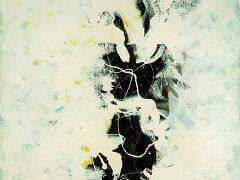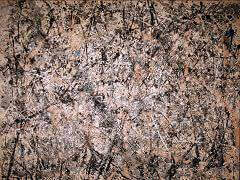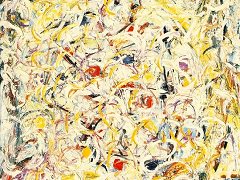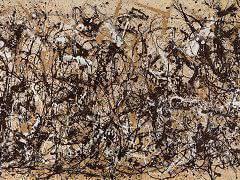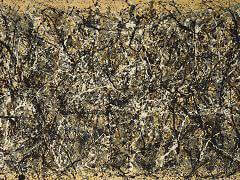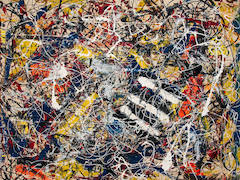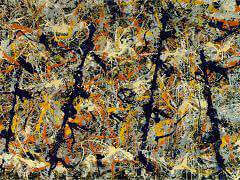Number 28, 1950 by Jackson Pollock
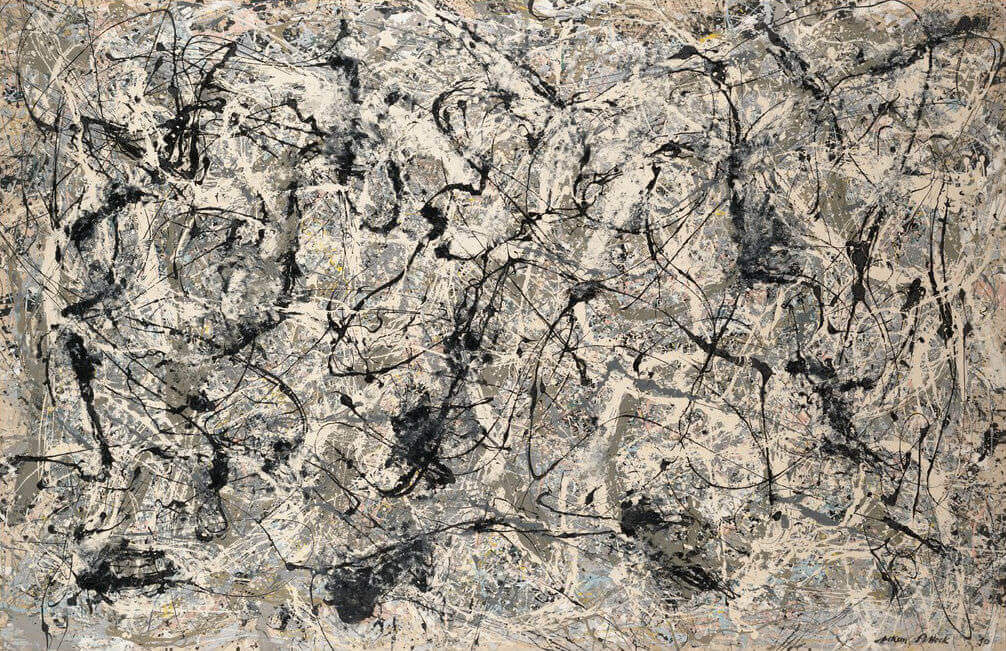
This painting is an acknowledged masterpiece from the artist's most successful period of work. Having moved from Manhattan to eastern Long Island, Pollock returned in 1947 to drip and pour techniques that he may have learned ten
years earlier from David Alfaro Siquieros. The resulting "allover" paintings, made from 1947 to 1950, constitute his greatest achievement.
Like almost all his New York colleagues, Pollock began his abstractions with drawings of figures, which were subsequently abstracted or obliterated. This canvas shows on its verso traces of drawing in black and yellow that are no
longer visible on the surface, having been obscured by a layer of aluminum, gray, and olive-green paint enlivened with blue, pink, and yellow. Pollock finished the painting with new drawing in white and black, which he knitted to
the middle layer by reintroducing some gray and white paint over the final layers of black.
The dominant critic of the day, Clement Greenberg, called such works "polyphonic." "Knit together of a multiplicity of identical or similar elements," he wrote, this art "repeats itself without strong variation from one end of the
canvas to the other, and dispenses, apparently, with beginning, middle, and ending."



